Introduction to SEO
What is SEO and Why It Matters
SEO, or Search Engine Optimization, is the secret sauce behind showing up on Google. You know how you Google something and the top few links always seem super relevant? That’s SEO at work. It helps your content rank higher in search engines, making it more likely for people to find you online. If you’ve got a website or blog, SEO isn’t just helpful — it’s essential.
How Search Engines Work
Search engines like Google use bots (also called crawlers or spiders) to scan websites. These bots crawl pages, understand the content, and index them. Then, when someone types in a search query, the engine pulls the most relevant and high-quality results. That’s where good SEO gives you an edge — it tells those bots, “Hey, my page is the one you’re looking for!”
Understanding Keywords
What Are Keywords?
Keywords are the terms people type into search bars. If you sell running shoes, a keyword could be “best running shoes for beginners.” These words and phrases help search engines know what your content is about.
Long-tail vs. Short-tail Keywords
Short-tail: Think broad, one or two words like “shoes.”
Long-tail: More specific, like “best trail running shoes under $100.”
While short-tail has more traffic, long-tail keywords often bring in visitors who are more likely to convert.
How to Do Keyword Research
Start by thinking like your audience. Use tools like:
- Google Keyword Planner
- Ubersuggest
- SEMrush
- AnswerThePublic
These tools show you what people are searching for and how often — goldmine for finding what to write about!
On-Page SEO Essentials
Title Tags and Meta Descriptions
Your title tag is like a headline in Google search results — make it catchy and include your keyword.
Meta descriptions are the short blurbs under your title. They don’t directly affect rankings, but they can boost click-through rates.
Header Tags (H1, H2, H3…)
Use headers to structure your content. Think of them as road signs for readers and search engines.
- H1: The main title of your page
- H2: Subtopics
- H3: Details under those subtopics
URL Structure
Keep it clean and readable. Use hyphens, not underscores. For example:
✅ example.com/seo-basics
❌ example.com/page?id=5432
Internal Linking
Linking to other pages on your site keeps visitors around longer and helps search engines understand your site’s structure. Think of it like guiding someone through your content maze.
Image Optimization
Don’t upload giant image files — they slow your site down. Also, use descriptive file names and alt tags. Why? Because Google can’t “see” images, but it can read descriptions.
Off-Page SEO Fundamentals
The Power of Backlinks
Backlinks are links from other websites to yours. Think of them as digital thumbs-ups. The more reputable the site, the more valuable the link. But don’t buy links — Google’s smarter than that!
Social Signals and Brand Mentions
While likes and shares aren’t direct ranking factors, they drive traffic. The more people talk about your brand online, the more trust search engines have in your site.
Technical SEO Basics
Website Speed and Mobile-Friendliness
Nobody waits for a slow site to load. Use tools like Google PageSpeed Insights to check your speed.
Also, make sure your site looks good on mobile. Google uses mobile-first indexing now, so it’s a big deal.
SSL Certificates and Secure Browsing
Ever notice the padlock in the browser bar? That means the site has SSL — it’s secure. Google gives brownie points to secure sites. Use HTTPS, not HTTP.
Sitemap and Robots.txt
Your sitemap is like a map of your site for search engines. Robots.txt tells bots what pages to skip. Both are critical for smooth crawling and indexing.
Canonical Tags and Duplicate Content
If you have similar content across multiple pages, use canonical tags to tell Google which one is the main page. This prevents content cannibalization — a fancy way of saying you’re not competing with yourself in search results.
User Experience and SEO
Importance of UX in Rankings
Google wants users to have a great experience. If your site is easy to navigate and answers questions quickly, it’ll perform better in rankings.
Bounce Rate and Dwell Time
Bounce rate: percentage of people who leave your site quickly.
Dwell time: how long they stick around.
High dwell time and low bounce rates tell Google, “Hey, this content is valuable!”
SEO Tools Every Beginner Should Use
Free Tools vs Paid Tools
Free Tools:
- Google Search Console
- Google Analytics
- Ubersuggest (limited)
Paid Tools:
- Ahrefs
- SEMrush
- Moz Pro
Must-Have Tools for Beginners
Start simple:
- Google Search Console – monitor your performance
- Yoast SEO (WordPress plugin) – optimize on-page SEO
- AnswerThePublic – generate content ideas
Common SEO Mistakes to Avoid
- Keyword stuffing
- Ignoring mobile users
- Not using analytics
- Skipping meta tags
- Poor quality backlinks
- No call-to-action on pages
Avoid these and you’re already ahead of many beginners.
Staying Updated with SEO Trends
SEO isn’t a “set it and forget it” thing. Algorithms change constantly. Follow sites like:
- Search Engine Journal
- Moz Blog
- Google’s Search Central Blog
Stay curious, and you’ll stay competitive.
Conclusion
SEO might seem like a mountain at first, but once you understand the basics, it’s actually a fun puzzle. It’s all about making your site better — for users and search engines. Start with strong content, stay consistent, and don’t chase shortcuts. With a bit of patience and practice, you’ll start seeing results. Every SEO expert started where you are — so take the first step and just keep going.







